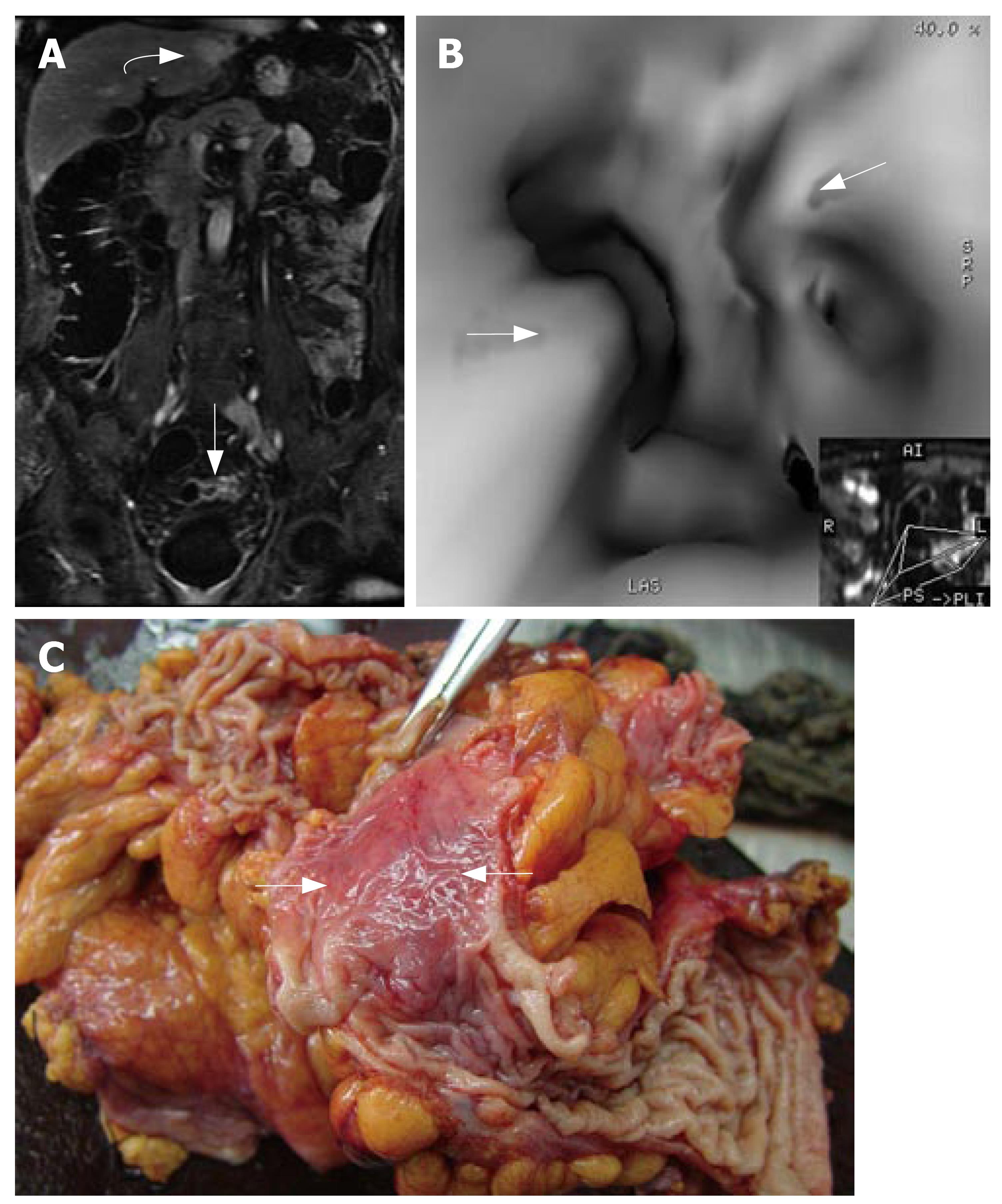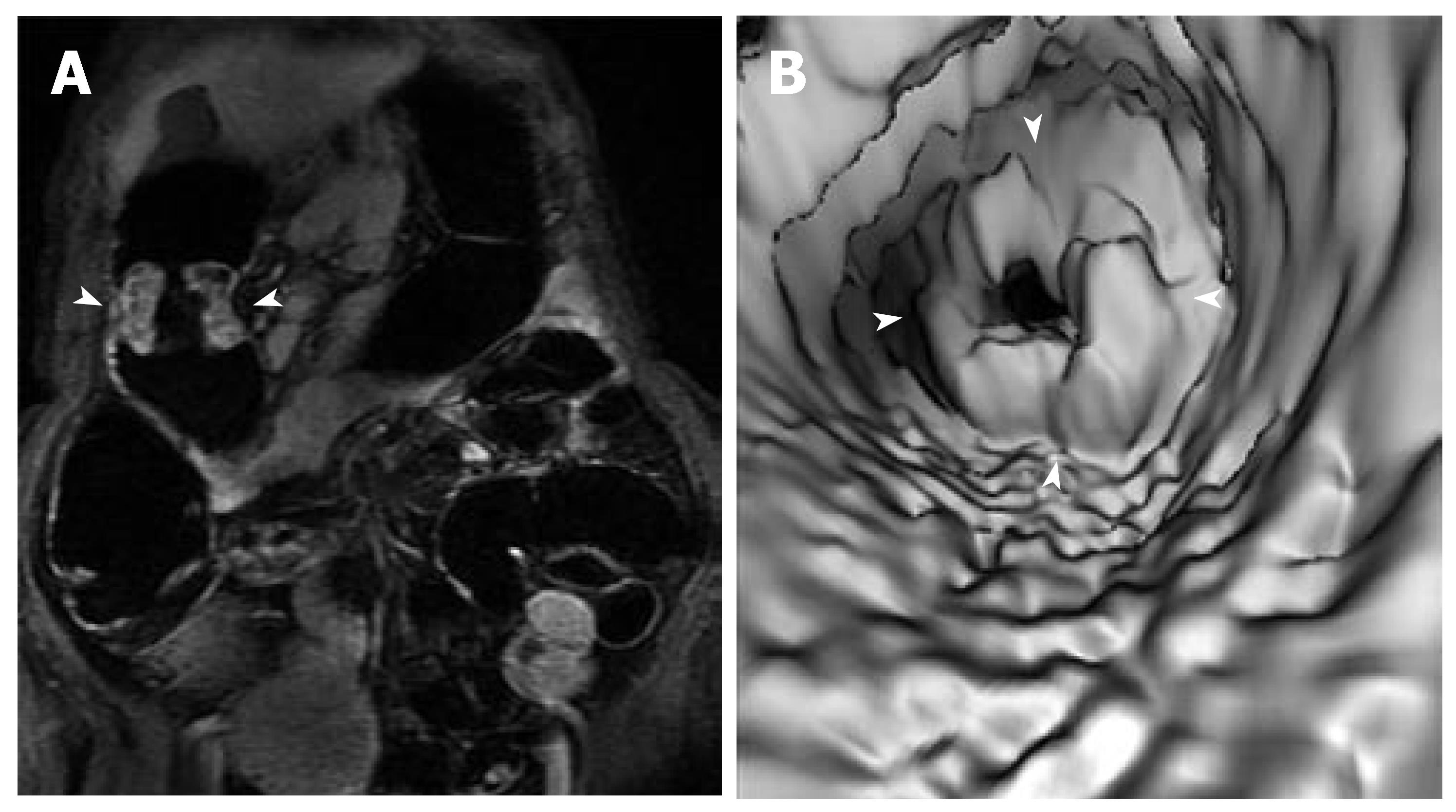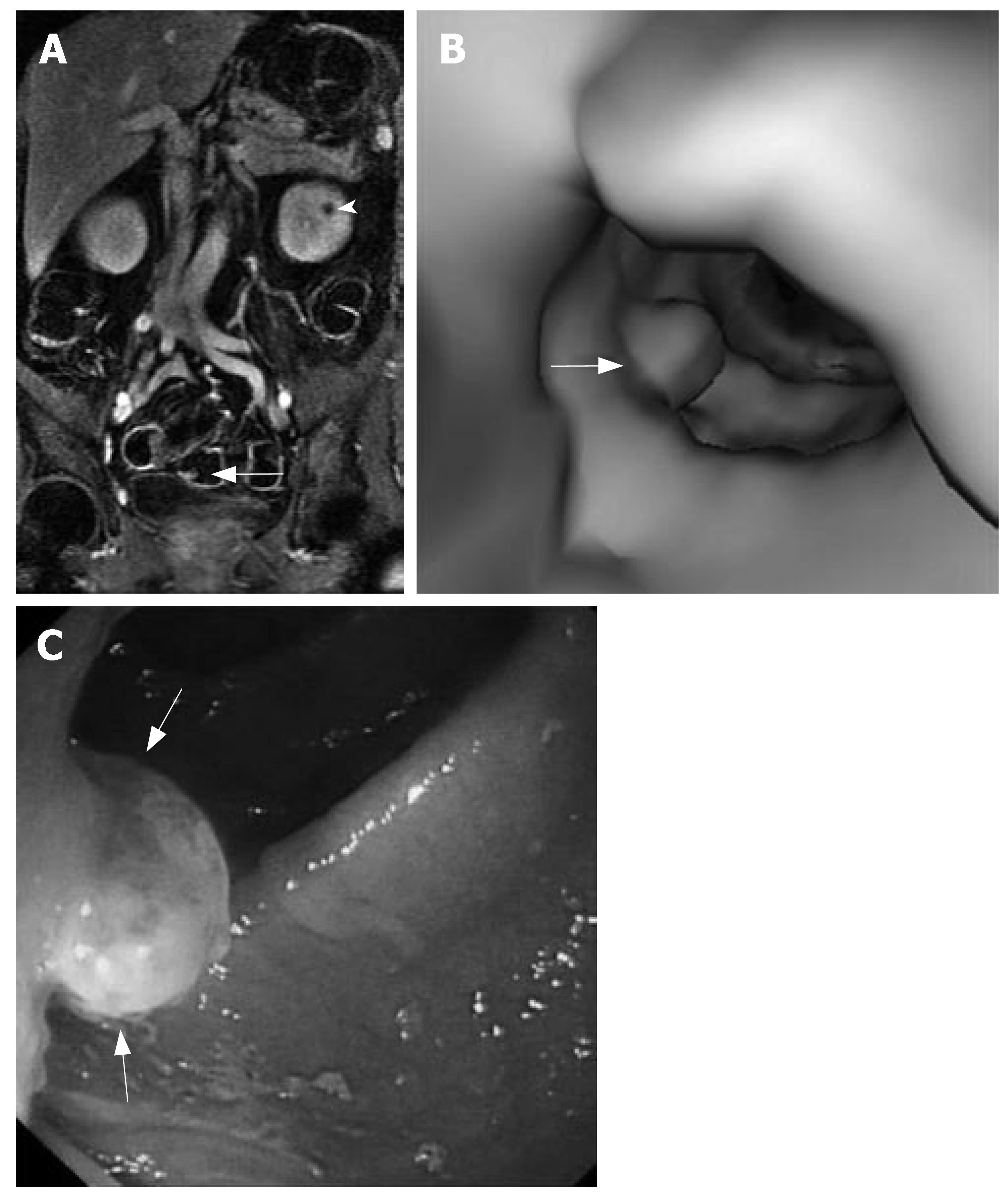Copyright
©2007 Baishideng Publishing Group Inc.
World J Gastroenterol. Oct 28, 2007; 13(40): 5371-5375
Published online Oct 28, 2007. doi: 10.3748/wjg.v13.i40.5371
Published online Oct 28, 2007. doi: 10.3748/wjg.v13.i40.5371
Figure 1 74-year-old man with history of altered bowel habits.
A: The thickened and increased-contrast-uptake bowel wall of sigmoid colon is seen (white arrow) in the coronal gadolinium enhanced T1-weighted image. In liver, an obvious high-intensity neoplasm is discovered (white curved arrow). Subsequent MR scan confirms the diagnosis of a hepatic angioma; B: MR virtual endoscopic rendering confirms stenosis of sigmoid colon (white arrows); C: Post-operation pathology confirms the condition of an inflammatory neoplasm. Specimen shows inflammatory mucosa change (white arrows).
Figure 2 79-year-old woman with history of right upper quadrant pain.
A: Coronal gadolinium enhanced T1-weighted image shows an obviously enhanced 6 cm carcinoma (white arrowheads) in the transverse colon; B: Virtual endoscopic rendering confirms the carcinoma (white arrowheads).
Figure 3 54-year-old man with positive results of FOBT.
A: Coronal gadolinium enhanced T1-weighted image shows a 7 mm polyp (white arrow) in the sigmoid colon and a cyst (white arrowhead) in the left kidney; B: Virtual endoscopic rendering shows a well-defined filling defect (white arrow) in the sigmoid colon; C: Endoscopy confirms the polyp (white arrows).
Figure 4 66-year-old man with history of right lower quadrant pain.
Coronal gadolinium enhanced T1-weighted image shows a 1.1 cm polyp (white arrow) covered by residual water in the ascending colon and multiple hepatic metastases (white curved arrows).
- Citation: Zhang S, Peng JW, Shi QY, Tang F, Zhong MG. Colorectal neoplasm: Magnetic resonance colonography with fat enema-initial clinical experience. World J Gastroenterol 2007; 13(40): 5371-5375
- URL: https://www.wjgnet.com/1007-9327/full/v13/i40/5371.htm
- DOI: https://dx.doi.org/10.3748/wjg.v13.i40.5371












